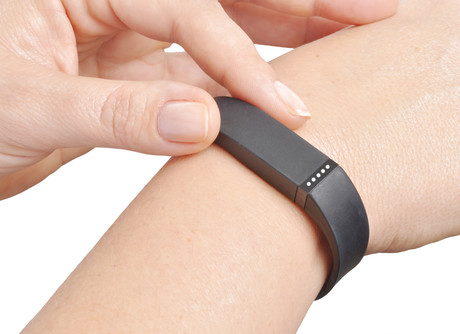Wireless self-charging system uses NIR band

A research team led by the Korea Advanced Institute of Science and Technology (KAIST) has developed a permanent, wireless self-charging platform for low-power wearable electronics by converting near-infrared (NIR) band irradiation to electrical energy. This novel technology can be applied to flexible, wearable charging systems without needing any attachments.
Colloidal quantum dots (CQDs) are promising materials for manufacturing semiconductors; in particular, PbS-based CQDs have facile optical tunability from the visible to infrared wavelength region. Hence, they can be applied to various devices, such as lighting, photovoltaics (PVs) and photodetectors.
Continuous research on CQD-based optoelectronic devices has increased their power conversion efficiency (PCE) to 12%; however, applicable fields have not yet been found for them. Meanwhile, wearable electronic devices commonly face the problem of inconvenient charging systems because users have to constantly charge batteries attached to an energy source.
A joint team led by Professor Jung-Yong Lee from KAIST and Jang Wok Choi from Seoul National University decided to apply CQD PVs, which have high quantum efficiency in the NIR band, to self-charging systems on wearable devices. Their work has been described in the journal Advanced Materials.
The researchers employed a stable and efficient NIR energy conversion strategy. The system comprised a PbS CQD-based PV module, a flexible interdigitated lithium-ion battery and various types of NIR-transparent films.
The team removed the existing battery from the already commercialised wearable healthcare bracelet and replaced it with the proposed self-charging system. They confirmed that the system can be applied to a low-power wearable device via the NIR band.
While there have been numerous platforms that utilise solar irradiation, the newly developed platform allows conventional devices to be comfortable to wear and charged easily in everyday life using various irradiation sources for constant charging. The proposed platform thus facilitates more flexible designs — which is important for actual commercialisation — and is said to secure higher photostability and efficiency than existing structures.
“By using the NIR band, we proposed a new approach to solve charging system issues of wearable devices,” said Prof Lee. “I believe that this platform will be a novel platform for energy conversion and that its application can be further extended to various fields, including mobiles, IoTs and drones.”
Predictive AI model enhances solid-state battery design
ECU researchers are working on ways to make solid-state batteries more reliable with the help of...
Boosting performance of aqueous zinc–iodine batteries
Engineers from the University of Adelaide have enhanced aqueous zinc–iodine batteries using...
Sodium-ion battery breakthrough boosts energy storage
Scientists have discovered that leaving water inside a key material, rather than removing it,...




